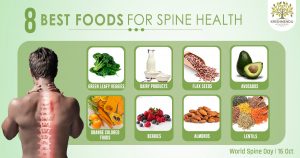Blog
8 Factors that lead To High Risk Back Pain
Most of the common sighs one perceives might just be due to that acute sting in the back. Mostly it begins with a twinge and then it starts to radiate down the back as your daily activity continues. Then the bothersome becomes dangerous when even just a movement appears hard. One of the most common niggles of the nation, spreading from a teen to the old, ‘back pain’ is extremely devastating if not diagnosed and treated correctly and on time. While lifting heavy things, falling, or taking a bad step on stairs or ladders many of us have hurt our backs. But there are some everyday back pain triggers that many people aren’t even aware of. Let’s have a look at some likely causes of the acute sting that terrors one and all. Factors that trigger high-risk back pain – 1. Obesity/overweight: The risk for back pain is more for overweight people especially for people with extra weight around the mid-section as it pulls the pelvis forward, creating stress on the lower back. 2. Sedentary lifestyles: Lack of exercise can cause or worsen back pain due to an increase in stiffness and weakened muscles. Even any sudden pressures can injure your back as the muscles are stiff and inactive due to lack of activities. 3. Mentally stressful life: Most people who are under stress and don’t manage it effectively tend to sleep poorly, have a poor diet and get a little exercise. Mental distress can cause muscle tensions resulting in physical or neurological imbalances which might stimulate back-pains. 4. Smoking: People who smoke are prone to develop low back pain almost three times more than non-smokers. 5. Strenuous physical work/exercise: A regular overstated risky physical labor or even an improper physical workout can strain your spine leading to severe back pain. For instance, lifting something heavy not in a proper manner every day or occasionally, can raise your chances of hurting your back. 6. Accidents, injuries & other internal issues: Past accidents, kidney stones or other kidney-related issues, menstruation, ovarian and uterus issues, etc. can also contribute to being a cause. 7. Pregnancy: Back pain is common among pregnant women as it is caused due to the strain on their back muscles. 8. Age: Bones and disks in our spines can degenerate over time, causing stiffness and soreness making older adults more susceptible to the tremor than young adults or children.



8 Best Foods for Spine Health
Are you someone who suffers from back pain or spinal issues regularly? Did you know eating a few things can help reduce the pain? Well, a healthy spine is vital to your well-being. Exercises, along with a healthy diet that comprises of the below-given superfoods and a bit of care will help maintain your spine health. Green leafy vegetables Green leafy vegetables are full of magnesium, iron, calcium, and folate (vitamin B9) which the body uses to promote bone and neurological health. The antioxidant content in it protects cells and is ideal for people recovering from spinal cord injury. Incorporate green leafy vegetables like spinach, broccoli, kale, and cabbage to keep the bones and tissues of the spine healthy. Dairy products Dairy products give you the required dose of calcium and vitamin D to build and maintain healthy bones and also to promote proper nerve function. Consuming milk, cheese and yogurt will help prevent osteoporosis due to the ample amount of calcium in it. Do not binge on too much of dairy products as it could increase fat or cholesterol level in your body. Flax seeds Flax seeds are rich in omega-3 fatty acids which help fight inflammation. Being a good source of plant-based protein, this will keep the muscles and bones strong. Avocados Avocados are great for spine health and contain fiber and potassium which boosts overall health. Considered to be an anti-inflammatory food, it is good for relieving from back pain and the potassium content will help reduce swelling. Orange colored foods Orange colored foods like oranges, carrots, and papaya are considered to be good for spinal health. Calcium, vitamin A and C, omega-3 fatty acids in these foods will reduce inflammation, chronic back pain and promote spine health. Citrus fruits like lemons and oranges contain vitamin C which helps in the healing process and collagen formation, which is essential for healthy bones and connective tissues. Berries Berries such as blueberries, blackberries, and strawberries are excellent sources of antioxidants which protect the cells and removes toxins. It also helps prevent further damage to the central nervous system. Resveratrol in berries helps reduce oxidative stress and protects the spinal cord after injury. Almonds Almonds are rich in magnesium, calcium, vitamin E and phosphorous which is essential for strong bones. Omega-3 fatty acids and antioxidants in almonds fight inflammation and promote bone health. Lentils Lentils and beans are full of vital nutrients such as protein, folate, iron, and fiber, responsible for promoting spine health. Being protein-rich food helps in maintaining and repairing bones, cartilages and soft tissues in the spine.



7 Yoga Poses to Reduce Back Pain
Yoga can help manage your back pain by strengthening your back and hamstrings, enhancing the flexibility of your spine and improving blood circulation levels. Here are seven amazing yoga postures that work wonders for your back:- 1. Adho Mukha Svanasana (Downward Facing Dog Pose) Considered the quintessential yoga pose, Downward Facing Dog pose provides a total body stretch and specifically targets the back extensors. The entire spine is stretched and decompressed in this position. When doing the pose, focus on straightening your back as much as possible while lifting your hips and pushing the heel of your feet towards the ground. 2. Ardha Matsyendrasana – (Sitting Half Spinal Twist) This pose helps in getting rid of back pain as it increases the flexibility of your upper body. Not only does the pose increase blood circulation to the spine and back, it also improves your posture and spine mobility. Sit erect with your legs stretched out. Interlock your left ankle against the right knee. Twist your trunk to the left while lifting the right hand, bent at the elbow. Allow the elbow to rest on the folded left knee. The left hand should be placed a little behind your body, palm resting on the floor. Hold the position for about 15 counts before relaxing. Repeat the same procedure with the other side. 3. Balasana – (Child’s Pose) Child’s Pose is considered to be an amazing way to relax as it can stretch your entire back and your hips. Start by balancing on all fours, keep your arms forward and sit back so your butt is resting just above your heels. Hold and breathe deeply. The more you extend in either direction, the more you would feel relief from back pain. 4. Bhujangasana – (Cobra Pose) This pose strengthens the back muscles & spine. Lie down in supine position on the floor with your legs pointing out, heels in contact. Bring your hands on either side of the chest while resting your palms on the floor, in line with your chest. Taking a deep inhalation, move your head and shoulders backward, without exerting pressure on the palms, just up to your navel. Hold the pose, breathe for a count of 10. Exhaling deeply, relax and come back to the initial position. 5. Dhanurasana – (Bow Pose) Lie down with your face towards the ground and reach your hands toward your ankles. Slowly lift your chest and thighs away from the floor by drawing your chest forward and the back of your thighs toward the sky. This posture is a wonderful way to strengthen the back muscles, but if you have a back injury, only practice this on Doctor’s advice. 6. Trikonasana – (Triangle pose) Triangle pose helps strengthen your spine and stretches the hamstrings, calves, hips, and shoulders. Straighten your right leg and reach your right hand forward and down towards the right leg. Make contact above the knee, on the shin, foot, floor or you can use a block and place your hand on it, near the front foot. Make sure that your left arm is up and the chest is open to the side. 7. Ustrasana (Camel Pose) This yoga pose is great for fixing that stiff back from hunching over all day. To practice this pose, start on your hands and knees but lift your hands off the ground. Slowly bend backward and grasp your ankles while extending your head backward. Continue with deep breaths as you keep trying to lengthen and make your spine more flexible.



Be Mindful not Mind Full: 6 Ways to Boost Mind Health
Do you think of many things simultaneously? Has that been a cause of concern for you? Has it disturbed your productivity and mental peace? A chaotic mind leads to a chaotic core! For good mental health, it’s imperative to bring balance to your mind. In this modern era, we often get stressed with our busy schedules, deadlines, work pressures, payments and loans which lead to chaos both in your mind and body. More the anxiety, stress and unhealthy lifestyle, more unbalanced the mind is, triggering several complications. The foremost and the most fundamental way of balancing stress and bringing peace to mind is to slow down and return to balance. Following the recommended below mentioned ways will help you do so – Meditation Meditation is one of the best means to cultivate passive awareness and have a far healthier response to stressful situations. A daily meditation practice can truly refresh your mind, helping to rewire your response to challenging circumstances that life brings ahead every day and also bestows more clarity and awareness. Pranayama is a form of meditation which comprises of yogic breathing exercises that effectively clears accumulated tension, relieves stress and gives you a peaceful mind. This also helps eliminating toxins (AMA) and stagnation from the body. Yoga Yoga is a magic of Ayurveda that does wonders to both your mind and body. It helps move prana (the vital breath) in the body, removes tension, clears stagnation and encourages flexibility, both in the mind and body. Vata and Pitta pacifying yoga routines like Balasana, Uttanasana, Shavasana, Adhomukhasvanasana, Setu Bandha Sarvangasana to name a few, are often ideal when it comes to excess stress and anxiety. Sleep Nothing but the important antidote to excess stress – Sleep. Having a restful sleep plays an important role in the repair and rejuvenation of tissues (both brain and body) and also helps in removing toxins from the body. Early to sleep and early to rise with a proper 8 hours of rest in between is recommended by Ayurveda. And majorly when your mind and body is overloaded with stress, the more rest you take, more refreshed you would be. Herbs Ayurvedic Herbs such as Ashwagandha, Brahmi and Peppermint (Pudina) are known for its ability to support the body in coping with stress while calming the mind. They not only encourage quality energy throughout the day but also gives you a sound sleep at night. Diet With an overload of stress, the last thing you would want is a weak diet and yes, irregular food habits as well. Unhealthy diets such as junk, fried and fast foods all would worsen the condition. According to Ayurveda, it’s considered that unhealthy diet is one of the potential causes of mental imbalance. If the food is not properly digested, it leads to the production of Toxins (Ama) which in turn can cause stress, anxiety and irritability. Ayurveda recommends a regular food routine consisting of green leafy vegetables, whole grains, oranges, pomegranates, amla, olives, berries, nuts and seeds for a good brain health. Panchakarma Known as the Purification or purgation therapy in Ayurveda, Panchakarma have shown to be very beneficial to mental and emotional functioning. Some of the therapies followed in Panchakarma that is good for mental health are Abhyanaga, Nasya, Shirodhara and Basti. These detoxification procedures not only remove toxins from the body but also improve mood and mental clarity. For a better mental health and peace of mind, its recommended to undergo body purification procedures twice a year. Self-Care Keeping aside a time for self-care each day is the best you can gift to your mind. Choosing to prioritize things like adequate rest, refreshing or nourishing practices like taking a long bath, massaging your feet before bed, sitting in the calm nature, reading an uplifting or inspiring book, watching a good movie or just lying in the couch for a while, all these can help us stay centered as we navigate the challenges of the world around us. These simple practices help relax the nervous system, releases tension and quietens the mind.



8 Easy & Effective Home Remedies to Lighten Stretch Marks
Generally with significant weight loss and gain, comes this entity labeled as stretch marks. They are something that people usually escape from, as they tend to deface their whole personality. It is difficult to completely wipe off stretch marks; however, there are some home remedies for lightening them so that they don’t appear as prominent- 1. Lemon Juice Due to the acidic nature and natural bleaching properties of lemon juice, it is considered to be one of the most effective remedies to lighten stretch marks. Simply cut a lemon, squeeze out the fresh juice and rub it gently onto the affected skin. Rinse it off after 10 minutes with some warm water. 2. Vegetable Oil Massage Vegetable oils such as coconut oil, castor oil and even olive oil have the property of moisturizing skin and smoothing out wrinkles. Both these actions ensure that these oils are equally good for getting rid of stretch marks. Take some warm olive oil and massage it deep onto the affected skin before bed. Rinse it off the next day morning with some warm water and mild soap, if necessary. When it comes to castor oil, the best way is to rub slightly warmer castor oil directly onto the affected skin and then wrap a cloth dipped in hot water (but not uncomfortably so) around the area. 3. Carrot Juice Carrot juice is rich in minerals and vitamin C and helps beautify skin. Mix carrot juice with one teaspoon of sea salt. Massage this paste on the scar, leave to dry and rinse with warm water. 4. Egg White Egg white is rich in protein and is useful in dealing with stretch marks. Collect egg whites from two eggs and whip it gently. Apply this as a thick layer onto the marks and let it dry. Rinse it off with water. 5. Aloe Vera Gel Massaging the pulp of Aloe Vera on stretch marks will help in firming up the skin. The enzymes present in this plant will promote the removal of damaged tissues and keeps your skin hydrated and healthy. Using aloe vera gel will also improve your skin tone and give you an instant glow. 6. Water Drinking plenty of water helps in detoxification of skin pores and restores elasticity, which will help a lot in getting rid of stretch marks. It is advised to drink one to two glasses of water several times during a day and a minimum of 10 glasses of water per day to keep the body hydrated. 7. Exercise A good workout routine comprising of aerobics or yoga will prove to be beneficial as a sure-shot cure for stretch marks. Toning the muscles will allow the skin to firm up, which fades stretch marks. 8. Healthy Diet A balanced diet goes a long way. Add more and more proteins, and vitamin C and E-rich foods to your diet as it promotes the growth of new tissues and healing of damaged tissues in the skin. Don’t empty your pockets spending a whooping figure on all those expensive cosmetics thinking of a magic cure for these ungainly stretch marks, all of it maximum just yields you a reduced intensity. So why don’t we exploit the same benefits from simple ingredients you already have at home. Well on saying it all, the best medicine is Prevention. The ideal way to prevent stretch marks is to avoid rapid weight gain or loss. If you are on a stringent weight loss diet, always try to blend a balanced diet plan with efficient core exercises.



Go Green. Go Healthy. 8 Health benefits of being a Vegetarian & 9 Superfoods to include in your daily diet
Adopting a vegetarian diet comes with a multitude of benefits and is hailed to be one of the perfect ways to stay healthy. A vegetarian diet is said to be a complete one with the presence of essential nutrients, vitamins, folic acid, magnesium, unsaturated fat, and fiber. Therefore, the digestion process and health quotient of vegetarians are said to be high. From reducing the risk of various lifestyle related diseases to promoting weight loss and much more, the benefits of following a vegetarian diet are numerous. Here are some of the key benefits of being a vegetarian: a. High fiber content b. Easy to digest and prevents deposition of AMA (toxins) c. Lowers cholesterol levels d. Reduces risk of cardiovascular diseases e. Promotes weight loss f. Reduces risk of diabetes g. Improves skin health h. Helps increase lifespan To reap the above benefits, here are few foods to include in your daily diet: 1. Green leafy vegetables Green leafy vegetables are a major source of iron, calcium, minerals, fiber, powerful antioxidants and anti-inflammatory properties. Consuming green leafy vegetables are considered to improve metabolism, protect eyes, promotes heart health and much more. They are ideal for strengthening bones, promoting digestion, improving skin health and for supporting optimal gut health. Some of the very popular and highly nutritious green leafy vegetables include spinach, broccoli, asparagus, cabbage etc. 2. Amla Amla is tridoshic in nature and helps balance the mind and body. Consuming amla will aid digestion, encourage weight loss, and promote strength and immunity. It is also good for diabetes, rich in antioxidants and good for hair and skin health. 3. Moringa The powerful health benefits of Moringa or drumstick is boasted by many. The leaves of moringa can be effective for normalizing blood sugar levels, improving digestion, strengthening immune system, improving eye health and for increasing mental clarity. From reducing joint pain to lowering cholesterol and improving sleep, swap moringa seeds with your every day snacks to enjoy its health benefits. Roots of moringa can be used to relieve kidney and lower back pain, to treat digestion problems and pain relating to rheumatism. 4. Beetroot Beetroot or commonly known as beets, are touted to be one of the healthiest vegetables. Known for lowering blood pressure and reducing the risk of strokes and heart disease, beetroots are boasted for its impressive nutritional profile. Low in calories, this vegetable is high in essential vitamins and minerals. Dietary fiber in beets improves digestive health and nitrate content helps increase blood flow to the brain and possibly reduces risk of dementia. 5. Pomegranate Pomegranate is said to be a super fruit which is good for all body parts. It is good for blood circulation, promotes skin health, and its antioxidants and anti-inflammatory properties help prevent and treat cardiovascular diseases. Having pomegranates will aid digestion and expel harmful toxins from the body. 6. Apple Apples are said to be one of the best foods for maintaining good health and treating many ailments. Rich in iron and phosphorus content, eating raw apples on a daily basis are highly beneficial for treating anemia. Also, it is good for people suffering from kidney stones and eye disorders like eyesight and inflammation. Apples are also good for reducing the risk of heart diseases, diarrhea and constipation. 7. Beans Considered to be nutritional powerhouses comprising of vitamins, iron, fiber, protein, potassium and low in fat, beans when consumed in moderate quantities will have a positive impact on our health. From black beans to soybeans, kidney beans and much more, these are high in amino acids. It replenishes the folate content in our body and prevents weakness, fatigue and loss of appetite caused due to lack of folate. Consuming beans will support heart health and is considered to help stabilize blood glucose level. Also, the fiber and healthy starches in beans help cut us off from food cravings, leaving us feel fuller and preventing overeating. 8. Carrot Carrots are known to be incredibly nourishing. The beta-carotene and other carotenoids present in carrots promote immunity and activate certain proteins that inhibit cancer cells. Drinking a glass of carrot juice will help combat leukemia. Carrots are ideal for promoting eye, hair and skin health. Glutathione in carrots help detoxify liver and eliminates toxins. 9. Almonds Almonds are known to be the best for pacifying Vata dosha. It supports smooth muscle function, reduces harmful LDL cholesterol and boosts blood circulation. Almonds are also good for brain health and nourish the nervous system.